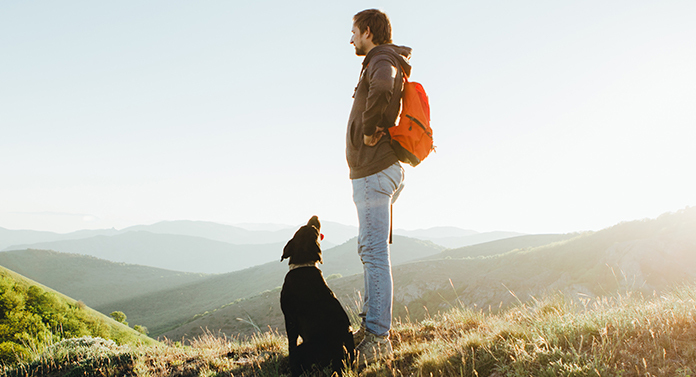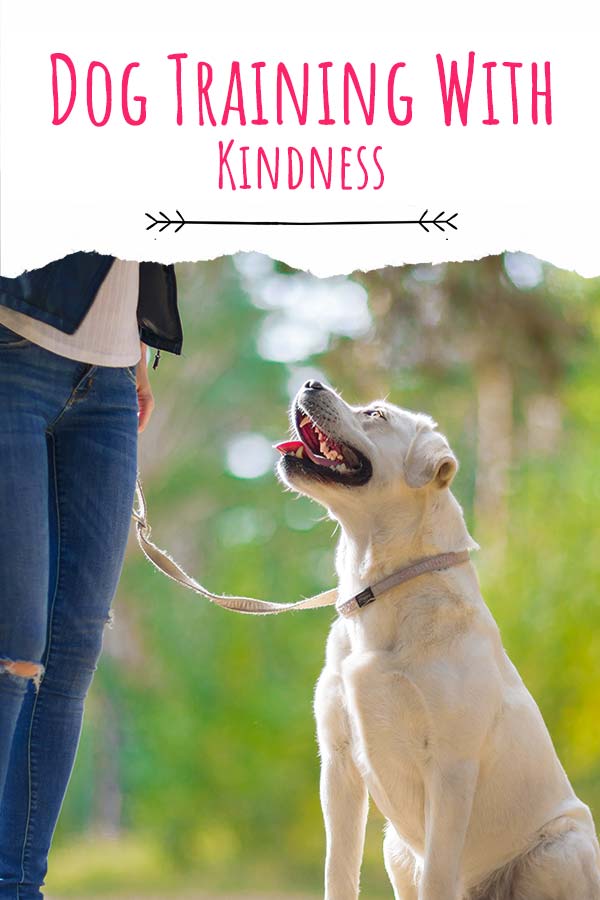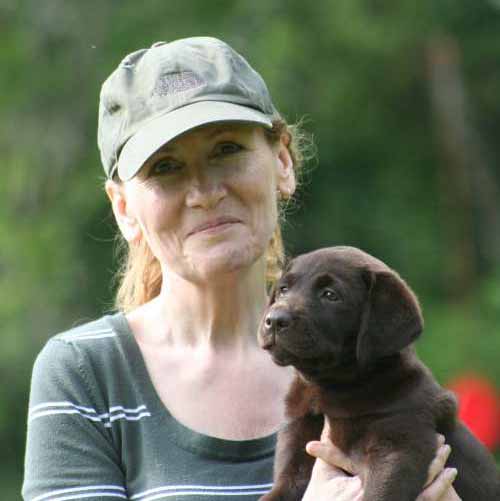 Dog training with kindness is taking the world by storm.
Dog training with kindness is taking the world by storm.
Training a dog using only kindness and rewards, without punishment, is a positive experience for you and your dog.
Punishment can make dogs fearful and reluctant to train. It can increase aggression and can also make the dog feel really sad!
And doing it doesn’t make you feel great either.
That’s why we only use kind, positive reinforcement based methods in our online dog training courses.
And here’s some great news – this more gentle training ethos is not just nicer for us and our pets, it can be a much more effective way of training our dogs too.
Traditional vs modern dog training
Traditional training was often punishment based.
In order to prevent the dog from repeating an unwanted behavior, the consequences had to be tough enough to make them not worth doing.
The problem is that you could get away with training one dog fairly kindly still, provided they were of a generally willing disposition.
But when training a more distractible dog, you might have to get very cross to see the same results.
Which is upsetting for you both.
Dog training with kindness is all about using motivation and encouragement, not fear or punishment.
And it has a number of benefits.
The benefits of dog training with kindness
- Dogs try out new behaviors voluntarily
- They learn new skills faster
- Longer training sessions
- Dogs are more motivated to work
- There is a stronger bond between dog and owner
- You don’t have to feel guilty
Dog training with kindness promotes more behaviors
Dogs that have been trained with punishment worry about getting things wrong.
The first time they try something new they have no way of knowing whether you will like it or not.
And that’s scary, because when they do try something for the first time they might get warm praise and a pat, or they might get scolded.
Which makes them reluctant to experiment.
Dogs trained with kindness try lots of different things, to see which one will please you.
That’s why modern positive methods are used with animals that work as assistance dogs, for examples.
Where the kind of tasks you want them to do involve behaviors that a dog would not naturally be inclined towards.
When you click and treat our old Lab, she dances around trying all manner of things to quickly work out what you want from her. So she can earn more food!
Learn new skills quicker
Many skills are quicker to teach, and to proof when only positive reinforcement is used, without punishment.
There are exceptions to this, such as leash work. But in general positive only methods have a number of benefits that speed them up.
These include being able to carry out multiple repetitions in a small amount of time, having that dog that is confident enough to offer you new behaviours, and the fact that your dog is working for something, not against it.
Let’s take a look at that last one, using ‘sit’ as an example.
Traditionally you’d get a dog to sit by pushing his butt onto the floor and saying ‘sit’.
Doing this repeatedly would show him what action you want him to carry out.
But this process was slowed by the fact that when you push a body, it naturally pushes back.
So when you are trying to get your dog physically into position, he’s also associating that command with the act of pushing himself up again.
Confusing for him, right?
The benefits of dog training with kindness
With positive reinforcement we can use capturing or luring to get a sit. These don’t involve touching your dog at all.
Either waiting for him to sit and clicking to mark the exact moment and then delivering a reward, or using a temporary lure to encourage him into that same position, then clicking to mark it and delivering a treat.
Either way, your dog has chosen that position, had a click to show him exactly what it was that you liked, and a reward to back it up.
And has not learned to associate sitting with anything other than a pleasant time!
Which makes them want to do it again!
Longer training sessions
Traditional dog training sessions could be stressful, for the dog and the handler.
Often manhandling them into the right position, correcting them when they got up and moved but they weren’t supposed to.
But dog training with kindness means that sessions can last for as long as your dog’s focus can be held on the food or toys used to motivate them.
Which means more time for fun training!
Motivated to work
Dog training with kindness is all about motivation. And it can be great fun drilling down to exactly what motivates your dog the most.
We all want to think our dogs will obey our every command for love alone, but the reality is a bit of a sausage or a game of tug are much more appealing.
When we are rewarded for our achievements, it makes us want to repeat them.
Stronger bond
Dogs and their owners have an incredible bond. Training strengthens it, and we really feel that positive training strengthens it more quickly and strongly.
If you chose to train with kindness, your dog will love to learn from you. And he will work hard to understand how to make you happy.
Because what makes you happy, has great results for him too!
Dogs trained with kindness want to spend more time with you, because you are only ever a source of great things for them.
So they stick close by, waiting for an opportunity to impress.
No guilt
Dog training with kindness is a fun and rewarding experience for you both.
You come out of every session on a high.
With traditional methods there were techniques that were hard to get your dog to understand, and if you had to tell them off for their wrong decisions this upset you both.
It wasn’t unusual for even technically successful sessions to have feelings of guilt attached to them.
Because to teach your dog you had to do something that made them feel a bit sad.
Modern positive methods focus on the good, and build it into something awesome.
No need for guilt!
Dog training with kindness
If you want to learn more about how to train your dog kindly, you can find some techniques for specific skills here:
You can also check out our online dog training courses here.
They take clicker training from the beginning, break everything down into easily understandable lessons and are packed with information.
And above all, they are kind.
I am certain that you and your dog will love this way of training as much as we do!


Free Training Tips
Get Pippa's free dog training tips delivered to your inbox

 My Beagle Barks When Left Alone
My Beagle Barks When Left Alone